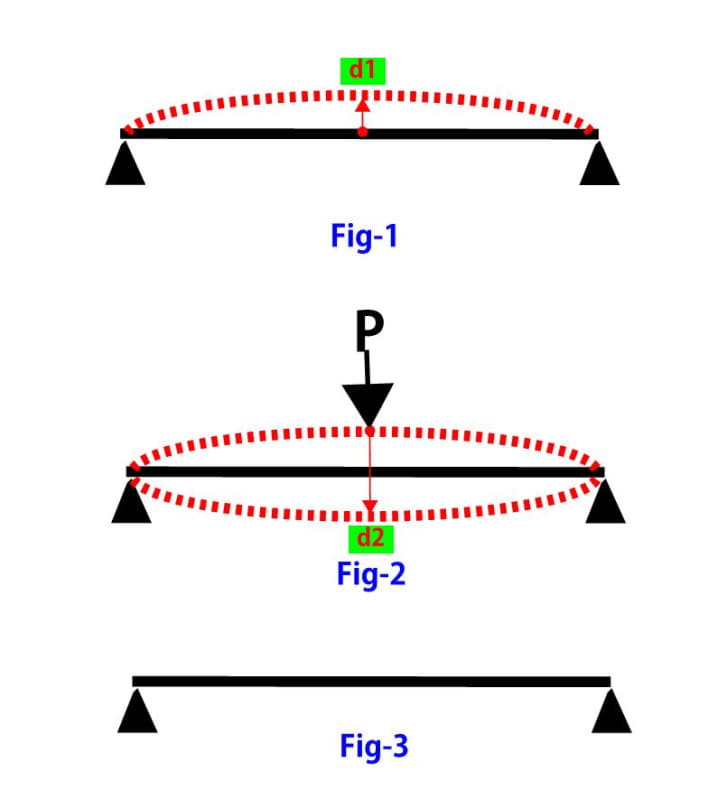JohnRwals
Structural
- Jul 8, 2020
- 151
Hi!
Once I posted a question about precast concrete double tee camber adjustment.
This time I would like to concentrate on creep effect.

My goal is to make final finish surface as flat as I can like Fig-3.
In order to accomplish this goal, I realized that creep effect(camber growth) should be minimized
after prestressed precast concrete member is stripped.
My idea is to use heavy concrete block (P) to apply temporary load on the beam.
I guess this concrete block can depress/reduce camber growth TO SOME DEGREE.
But, I am not sure what will happen when this concrete block is removed.
Do you think creep effect will resume (UP TO 100%?) as soon as temporary load is removed until topping concrete is poured?
As suppressed creep returns fully, can future creep be strong enough to damage topping concrete?
Please share your ideas and experience to control/reduce creep effect.
Thanks!
JR
Once I posted a question about precast concrete double tee camber adjustment.
This time I would like to concentrate on creep effect.

My goal is to make final finish surface as flat as I can like Fig-3.
In order to accomplish this goal, I realized that creep effect(camber growth) should be minimized
after prestressed precast concrete member is stripped.
My idea is to use heavy concrete block (P) to apply temporary load on the beam.
I guess this concrete block can depress/reduce camber growth TO SOME DEGREE.
But, I am not sure what will happen when this concrete block is removed.
Do you think creep effect will resume (UP TO 100%?) as soon as temporary load is removed until topping concrete is poured?
As suppressed creep returns fully, can future creep be strong enough to damage topping concrete?
Please share your ideas and experience to control/reduce creep effect.
Thanks!
JR

